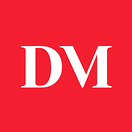As a consultancy, our people are our most important asset. I’ve been involved in every single hire we’ve made: and the adage is true here… the more we learn about hiring, the less we know.
This year has been all about democratizing key aspects of how the Partners run the business, instantiating our experience into actual tools and processes that enables auditing (and improvement) and gives opportunity to others. This happened across launching our new brand and identity, to sales and account management, to hiring. TBH, it’s an ongoing process and a very difficult one!
On the hiring front, we moved away from managing the hiring process with G Sheets, Forms, and Docs to an applicant tracking system (ATS) with Lever.co. One quick point here: the ATS gave us more efficiency but did not necessarily change quality—you must have strong fundamentals and philosophy in hiring, the ATS will only accentuate the strength or weakness in your company’s hiring.
All the learnings below, are driven out of our specific context: a small business with less than 40 staff including contractors hiring for a single discipline.
Numbers time!
- 150 Candidates, on average for a hiring quarter.
- Interview ~15%
- Place from interview ~26%
It is interesting to compare our stats to the Lever.co 2019 Talent Benchmarks Report (pdf)
| Lever.co Benchmark | DesignMap |
|---|---|
| Average number of interviews has dropped significantly from three years ago: ~4 interviews down to 2.5 | We’ve always had a standard of 2.5 interviews. Our third interview, can often be the most important if not always done: attending our Friday all-hands staff meeting is largely a cultural touchpoint. |
| Median Time to Hire: benchmark from apply to hire (not start) is on average 30 days. | Ours is the same, with a couple outliers for passive candidates. |
| Conversion rate: benchmark is 0.59% | Ours is ~2–3%: There’s one main reason for this: we have better, more targeted sourcing via agencies. |
| Place from Interview: benchmark is 40–50% | Ours is 13–26%: We have a high internal assessment, negotiation, and offer process that we employ due to our smaller size. |
| Offer Acceptance: benchmark is 66% | Ours is 100%: we only offer to candidates that we have a successful interview and negotiation process with: no finger crossing. |
Sourcing
UX design is in high demand, and this year more than ever. The shift in our business’ favor is an increase in “product design” demand with the correlating challenge of competing for candidates. It’s too early to call, though this year we’ve felt the winds changing away from big brands like Facebook, Uber, Airbnb, Apple, et al., to SaaS product companies where candidates are less focused on the resume event for themselves but on more meaningful design experience. Google remains a respectable outlier: candidates feel strongly they get both.
Quickly on ways to source…
- LinkedIn job posting success
- Job posts on LinkedIn have generated quality applicants: proving that the job is successfully being placed in front of the right end users.
- The paid product LinkedIn Recruiter: little to no advantage using this service, Greenhouse and Lever offer better ATS functionality.
- Placement agencies
- High placement fees.
- They can fill your candidate funnel, within just a few working days.
- Headhunters
- Very targeted searches where you want to find candidates with a defined set of criteria.
- Referrals
- As the benchmark data proves: referrals have higher quality candidates and time to hire is cut in half.
- We do not rely on filling the pipeline with referrals: while high quality, they don’t help reliably forecasting placements.
- Proactive vs Passive tactics
- Reaching out to passive candidates has not worked, when we do it directly (versus an agency on our behalf)
- Hosting events, similar to awareness marketing campaigns: create super high quality touch-points and top-of-mind with passive candidates who have come back to DesignMap to apply.
Our strategy has always been to use placement agencies, mainly because sourcing is a factor of company size. We want to get a high volume of candidates, so we rely heavily on getting our top of funnel filled by multiple agencies. If you are a larger company, you have awareness and marketing that generates more inbound than proactive sourcing.
From UX Designer to Product Designer
This was the year where many job posts contain the specific word “product” and candidates have changed their titles accordingly. We believe this is a long shift in the market away from commoditization of design in content websites to more user experiences that are transactional in nature. The reason? The title and position is compensated much higher.
For most jobs and candidates, products are still largely consumer experiences like a Yelp or Airbnb. While we like this shift of focus into more task-based experiences, we still have a hard time finding a high standard of design and focused on B2B products and platforms: typically deeply complex topics, where users are trying to do diverse tasks over many sessions.
What’s in store for 2020
The demand for the do-it-all designer continues! However, unlike years past, the focus will be less on prototyping in code (remember that?) and more on strategic design.
Specifically, the new design unicorn will be defined as a strong individual contributor combined with:
- Design Strategy
- Team Management (Hiring & Learning & Development)
- Design Investments & Budgets
- Design Evangelism & Thought Leadership
The rise of the “Head of Design” at early stage startups, as their first design hire, is a good indicator of this new unicorn.
I mentioned the word “product” earlier, and believe that the meaning behind this word relative to design will continue to evolve in the design field. Here at DesignMap, our value is much much more than design of the product: we deliver increasing layers of influence: screens → products → systems → services → platforms → markets → ecosystems.
The title will move beyond “product designer…” to what?
What we don’t know
-
What are the future titles and roles of a designer? Do we see the discipline become subsumed by business, or increasingly specialized? Many years ago some trumpeted the “Chief Design Officer” but that didn’t actually actually happen.
-
The “shape” of a designer’s skillset is a constant discussion here and one we also hear on our client side: from design facilitation and training, to user research, all the way through to prototyping: will the field go towards specialization or towards generalization?
-
The stakes are only increasing: do we see more extreme vetting of candidates or do we see competition fierce for low supply that miss-matches are more common than not?
-
Where will design skills and tools go in the new year? Massive investment into Adobe, Sketch, Invision, Figma, et al., to win the future of design and collaboration tools is INTENSE. What does the candidate put on their resume?
-
We see an emphasis on soft skills, aka emotional intelligence in the workplace that designers are well suited to, but at the expense of hard design skills?
-
Where do all the entry and mid-levels go? The wider tech industry only wants senior-level designers. Will the adaptation see companies invest in talent early, and retain them longer than a year or two? Do we see a downturn in the General Assembly/trade school industry where there’s so little demand for entry levels that the bubble is popped?


